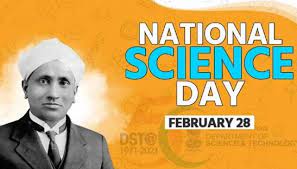
National Science Day 2023: Every year on February 28th, National Science Day honours Chandrasekhara Venkata Raman, also known as C.V. Raman, an Indian scientist and physician who discovered the “Raman Effect.” Every year, it is celebrated to honour the value of science and to serve as a reminder of the influence it has had on humankind’s way of life. In honour of India’s G20 leadership, the event this year has the theme “Global Science for Global Wellness.”
February 2023 Current Affairs Quiz
Notably: To commemorate the announcement of the discovery of the “Raman Effect,” the Government of India designated February 28 as National Science Day in 1986, under then Prime Minister Rajiv Gandhi.
Raman was born to a family of Sanskrit scholars in Trichy (present-day Tiruchirapalli) in the Madras Presidency in 1888. At the age of only 16, He received a BA degree from Presidency College in Madras, and was placed first in his class. While studying for his MA degree, at the age of 18, he got published in the Philosophical Magazine: this was the first research paper ever published by Presidency College.
What is the “Raman Effect”?
The Raman Effect is the phenomenon that occurs when a light stream passes through a liquid and a fraction of the light scattered by the liquid is of a different colour. This happens due to the change in the wavelength of light that occurs when a light beam is deflected by molecules.
In general, when light interacts with an object, it can either be reflected, refracted or transmitted. One of the things that scientists look at when light is scattered is if the particle it interacts with is able to change its energy. The Raman Effect occurs when the change in energy of light is influenced by the vibrations of the molecule or material under study, resulting in a change in wavelength.
In their first report to Nature, titled “A New Type of Secondary Radiation,” CV Raman and co-author KS Krishnan wrote that 60 different liquids had been studied, and all showed the same result – a tiny fraction of scattered light had a different colour than the incident light. “It is thus,” Raman said, “a phenomenon whose universal nature has to be recognised.”
The importance of the discovery
CV Raman’s discovery took the world by storm as it had deep implications far beyond Raman’s original intentions. “The character of the scattered radiations enables us to obtain an insight into the ultimate structure of the scattering substance,” Raman said in his Nobel Prize speech in 1930. For quantum theory, in vogue in the scientific world at the time, Raman’s discovery was crucial.
The discovery would also find its use in chemistry, giving birth to a new field known as Raman spectroscopy as a basic analytical tool to conduct nondestructive chemical analysis for both organic and inorganic compounds. With the invention of lasers and the capabilities to concentrate much stronger beams of light, the uses of Raman spectroscopy have only ballooned over time.





